Noncontact voltage testers are great for making sure the power is off earlier you outset an electric projection. But the testers are like shooting fish in a barrel to lose track of and misplace—which pocket is it in?
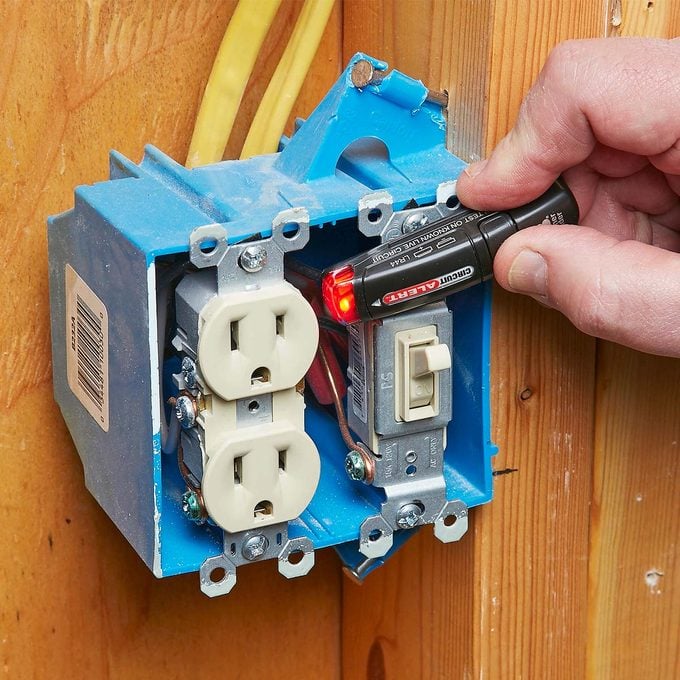
Electrical tools with onboard voltage tester
Noncontact voltage testers are smashing for making certain the ability is off before you start an electrical projection. Merely the testers are like shooting fish in a barrel to lose rails of and misplace—which pocket is information technology in? Tool manufacturer Gardner Bough solves the problem of lost testers past incorporating a tester right into the handles of its wire stripper and screwdriver—tools you're spring to have on mitt whenever you're doing electrical piece of work. Simply press the push button and move the tool handle near the wires to test before touching. Or, slide the tester off the tool handle to use it every bit a costless-standing unit of measurement. Find the GST-70M Circuit Alert Voltage sensing stripper (about $thirty) and SDT-10 screwdriver (nearly $sixteen) on Amazon or at home centers for these must accept tools for DIY work.
Plus: Don't believe this common electrical panel myth.
Learn how to connect a new circuit safely yourself.
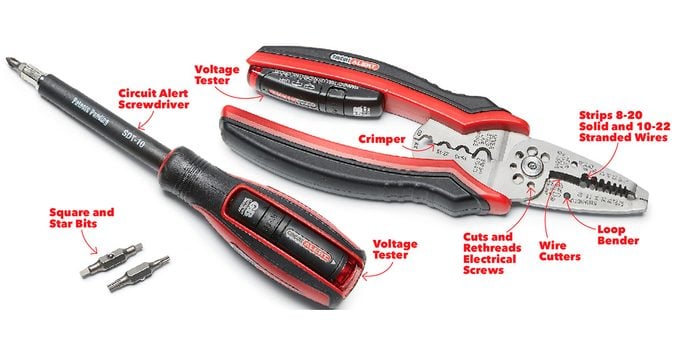
Disclosure: This post is brought to you past The Family Handyman editors, who aim to highlight products and services you might notice interesting. If y'all buy them, nosotros get a small share of the revenue from the sale from our commerce partners. We ofttimes receive products free of charge from manufacturers to test. This does non drive our conclusion as to whether or not a product is featured or recommended. We welcome your feedback. Take something y'all retrieve we should know most? Contact u.s., here .
These are the 8 about mutual electrical code violations DIYers make

Doing Electrical Work for Friends and Family
Many jurisdictions beyond Due north America allow y'all to do your own electric work in your home. As long as it passes inspection, there's no code violation concerns for DIYers treatment their own wiring. Trouble is, once friends and family hear that you're good at electric piece of work, requests to assist with theirs may start coming. This is a code violation in almost places. Working on your ain electrical system is fine, only only licensed electricians tin work on someone else's.
 Family Handyman
Family Handyman
Choosing the Wrong Circuit Breaker
To help you understand which electrical protection goes where, consider what each blazon of breaker was designed to do and make certain to follow the national electric lawmaking.
Standard Excursion Breaker
Circuit breakers protect home electrical wiring and equipment like furnaces, air conditioners, dryers and stoves. Standard excursion breakers are ameliorate at protecting wiring and equipment than preventing fires and protecting people. That'south why they have largely been replaced by GFCIs and AFCIs. There are only a few places left where standard circuit breakers can be used, typically for big home electrical appliances.
Ground Fault Circuit Interrupter
Ground error circuit interrupters (GFCIs) protect people in areas where they are likely to be using small appliances and where h2o is present. GFCI breakers and outlets take been around for awhile, and most people know they're required in bathrooms, kitchens and outdoors. Only our experts are still finding home electrical violations, specially in garages, crawl spaces, storage/work areas in unfinished basements, wet confined (within six feet of a sink) and sump pumps. And don't forget that GFCIs need to exist readily accessible to exist reset. This ways they shouldn't be installed on the ceiling or buried nether a hydro massage tub without an access console.
Arc fault circuit interrupter
Arc fault circuit interrupters (AFCIs) prevent fires in living areas where appliance cords are prone to be pinched or crimped, or chewed past pets. They used to be required only on sleeping accommodation circuits, but the National Electrical Code now requires AFCI protection in all living areas. They're equipped with sophisticated electronics that tin can detect an arcing status (like in a frayed lamp string), which may not be detected by a standard excursion breaker until after a fire has started. AFCI protection is not simply required for new construction. It's likewise required where branch-circuit wiring is modified, replaced or extended into existing homes. Plus: All DIYers need to know these 24 acronyms.
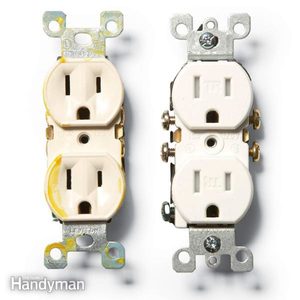 Family Handyman
Family Handyman
Sentry this video to learn more near mutual electric mistakes so you don't make them:
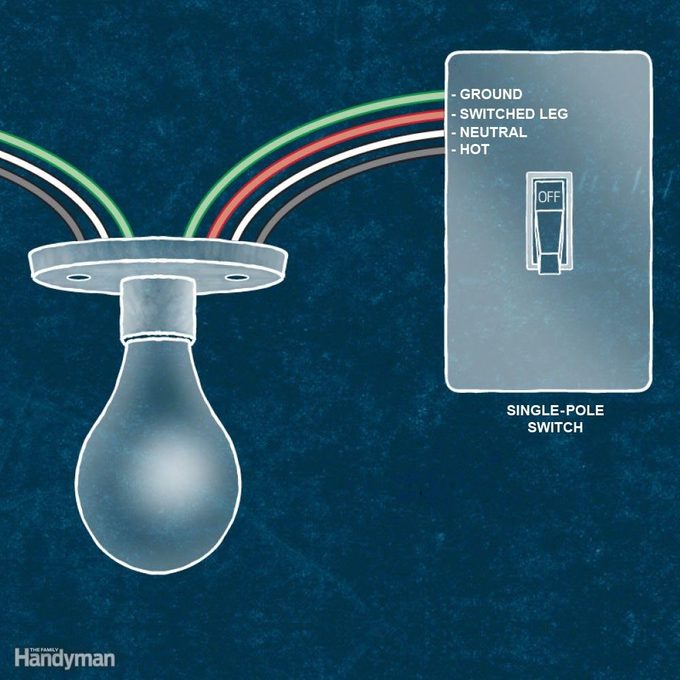 Family Handyman
Family Handyman
Wiring Switches Without a Neutral Wire
All switch locations need a neutral wire. This national electrical code was mainly implemented to accommodate potential future uses. Electronic switches require a small amount of constant electricity and therefore need a neutral wire run to them. There are exceptions to this NEC code, but if the walls are currently open anyhow, don't make the next person fish in a wire. Do it right and make sure there's a neutral wire in the box. Larn how to wire a three-way light switch yourself here.
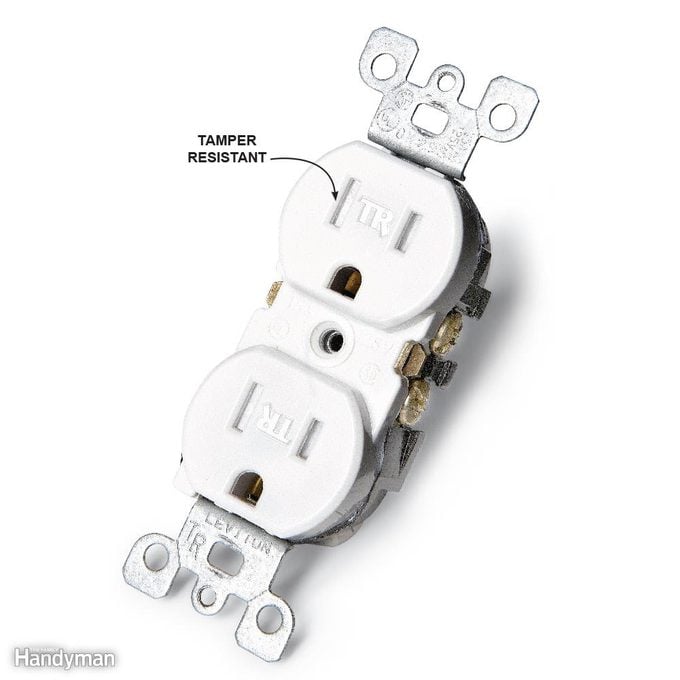 Family unit Handyman
Family unit Handyman
Forgetting Tamper-Resistant Receptacles
Tamper-resistant receptacles are designed to stop a kid from inserting an object, such as a paper prune. They're required for all locations, indoors and out. Tamper-resistant receptacles are a great invention, and then use them — it's national electric code. We'll testify you how to correctly install a tamper-resistant outlet.
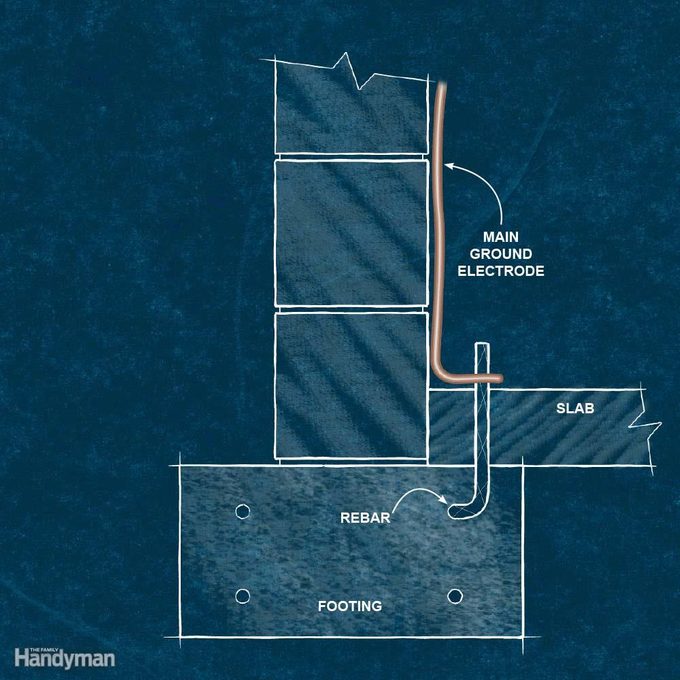 Family Handyman
Family Handyman
Using a Footing Rod Electrode When There's a Better System Available
For a long time, metallic hush-hush h2o piping was considered the best grounding electrode bachelor, merely virtually all hole-and-corner water piping today is plastic. And it turns out that rebar in concrete footings or the foundation for a business firm is really a more constructive grounding organisation than the ground rods nosotros've been using for decades. So if in that location's rebar in the new footings, that rebar needs to exist used as the primary grounding electrode. In a nutshell, if a new home has footings with at least 20 ft. of 1/2-in. rebar, the rebar embedded in those footings needs to be used as the primary grounding electrode. This new provision in the national electric code requires a lot of coordination between the trades and project managers. Electricians usually show upwardly long after the physical people have moved on, but good communication is much easier work than busting upwards concrete. Plus: Cheque out these eleven existent-life epic electrical fails.
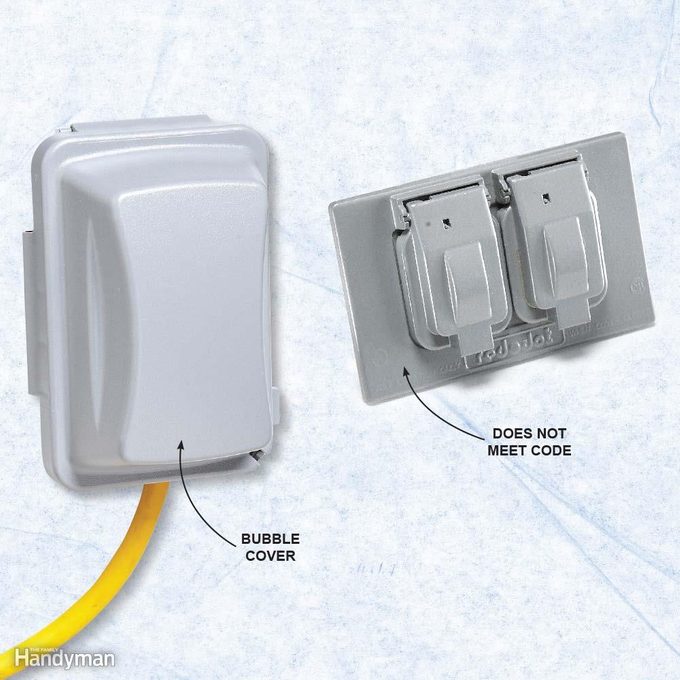 Family Handyman
Family Handyman
Installing the Wrong Cover On an Outdoor Receptacle
On outdoor receptacles, flat covers provide protection merely when a receptacle isn't in use. Only information technology'south not uncommon for extension cords to exist plugged in for extended periods of time — for holiday lights, for instance. In-employ or "bubble covers" provide protection at all times. The national electric code defines a "wet location" every bit an area that is subject field to saturation with water or other liquids, and unprotected locations exposed to the conditions. The national electric code has another definition for "clammy locations" that is more subjective, but if you recollect the receptacle is going to get wet, use an in-apply cover. And don't forget the weather condition-resistant receptacle. The national electrical code requires that all xv- and 20-amp receptacles be rated as weather-resistant and tamper-resistant when installed in both wet and damp locations. Learn how to install outdoor lighting and an outlet hither.
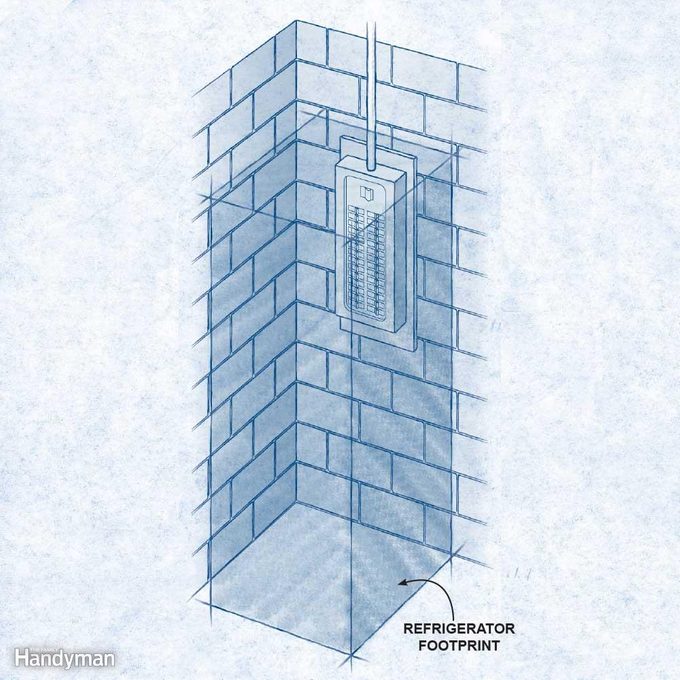 Family unit Handyman
Family unit Handyman
Crowding a Service Panel
A service panel requires a working clearance that's 30-in. wide, three feet deep and six feet 8 inches high in the national electric code. Here'southward a good dominion of thumb: If you can't park a refrigerator in forepart of the panel, you don't have enough working space. These clearances are designed to protect the person working on the panel. It'due south difficult to work safely when your arms are pinned to your sides. The panel also needs to be readily accessible, meaning the surface area should not exist used as storage space or require a ladder for access.
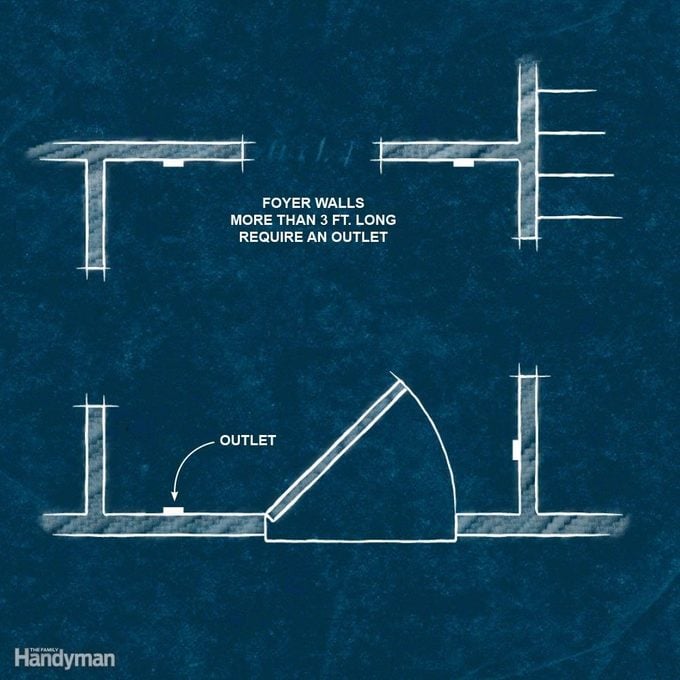 Family unit Handyman
Family unit Handyman
Installing Too Few Receptacles
The purpose of this national electrical code is to reduce the use of extension cords. From whatever point along a wall line, a receptacle outlet needs to be inside reach of a six-human foot appliance cord, and that six feet cannot exist measured beyond a passageway. The bottom line is that extension cords commencement fires and create tripping hazards — the fewer extension cords, the better. Plus: Check out these abode inspector horror stories.
 Family Handyman
Family Handyman
Insufficient Electrical Bonding
Grounding is not the same as bonding. Plumbing, phone lines, coaxial cable and gas pipe systems need to be not only grounded just also bonded to one another. Bonding equalizes the voltage potential between conductive systems. This greatly reduces the risk of a person becoming the path for electric current flow between two conductive systems in instance one of the systems becomes energized. Also, in a lightning strike, equalized voltage potential minimizes the run a risk of extremely high current jumping (arcing) between two systems that can crusade a burn down. Plus: You need to see these 36 almost unbelievable plumbing and electrical goofs.












0 Response to "2 Must-Have Tools for DIY Electrical Work"
Postar um comentário